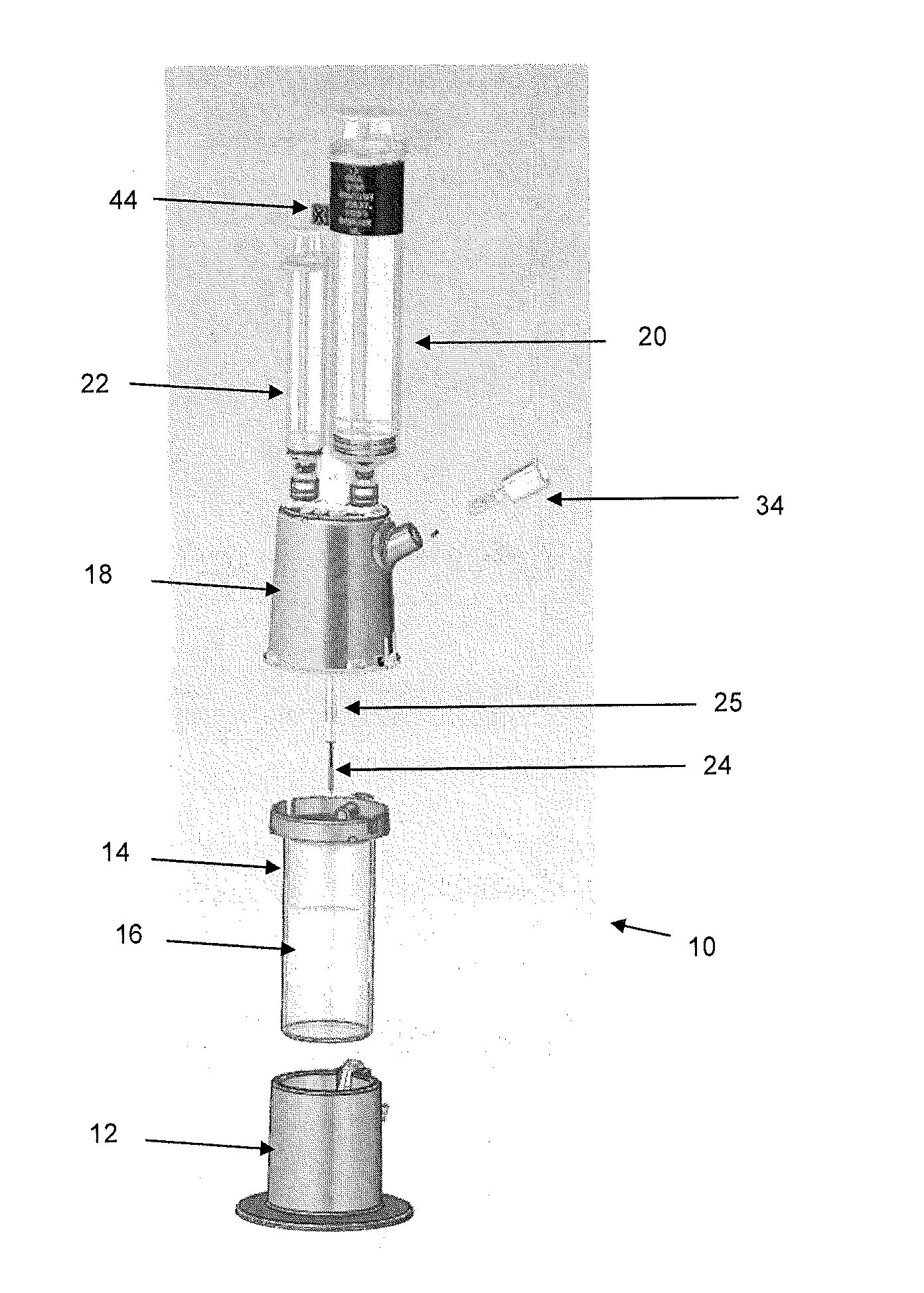Cell concentration devices and methods
a cell concentration and cell technology, applied in the field of regenerative medicine, can solve the problems of not being able to achieve high yield and high final concentration, and many commercial devices are not able to consistently capture high percentages of nucleated cells, so as to facilitate the extraction of target cells, reduce cross-sectional area, and increase the thickness of the layer of interest
- Summary
- Abstract
- Description
- Claims
- Application Information
AI Technical Summary
Benefits of technology
Problems solved by technology
Method used
Image
Examples
Embodiment Construction
[0044]A description of example embodiments of the invention follows.
[0045]A prior version of a system for concentrating and separating cells (also referred to herein as a cell concentrator) has been described in International Application No. PCT / US2010 / 036696, published on Dec. 2, 2010 as WO2010 / 138895, incorporated herein by reference in its entirety. Here, an improved system is described that has been fabricated and tested. Some key features of the improved system include:
[0046]a) a locking base;
[0047]b) a double needle extraction system with jet flushing;
[0048]c) an extraction needle lock that forces needle to seat in float; and
[0049]d) a syringe lock-out tab to ensure proper order of extraction.
[0050]FIG. 3 is an exploded view of an improved system 10 for separating components of difference densities from a physiological fluid according to an example embodiment of the invention. System 10 includes a base 12, a separation vial (container) 14, a float (insert) 16 disposed in the v...
PUM
| Property | Measurement | Unit |
|---|---|---|
| Fraction | aaaaa | aaaaa |
| Fraction | aaaaa | aaaaa |
| Angle | aaaaa | aaaaa |
Abstract
Description
Claims
Application Information
 Login to View More
Login to View More - R&D
- Intellectual Property
- Life Sciences
- Materials
- Tech Scout
- Unparalleled Data Quality
- Higher Quality Content
- 60% Fewer Hallucinations
Browse by: Latest US Patents, China's latest patents, Technical Efficacy Thesaurus, Application Domain, Technology Topic, Popular Technical Reports.
© 2025 PatSnap. All rights reserved.Legal|Privacy policy|Modern Slavery Act Transparency Statement|Sitemap|About US| Contact US: help@patsnap.com



